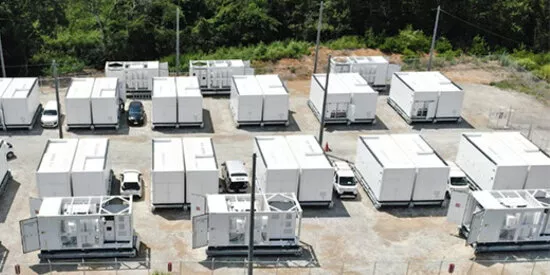
Xi Jinping Thought explains curious stance of China's central bank
PBOC is constrained from significant policy loosening by leadership's priorities
Odd as it may sound, the People's Bank of China is taking a rather hawkish policy stance.
Nominal gross domestic product growth has been below real GDP growth for the past four quarters, the longest such streak in China since the late 1990s. And consumer price inflation has been below 1% for over a year.
Yet the PBOC has been cutting short-term policy rates only gradually and reluctantly. Real short-term and long-term rates in China are now no lower than those of the U.S.
What can explain the central bank's curious posture?
The most important policy lesson from China in recent years is that what Beijing calls Xi Jinping Thought guides everything. China's leadership not only has firm visions about the direction the economy should take but also strong views on how these visions should be achieved and through which policies.
As a result, even to understand Chinese monetary policy these days, we need to start by comprehending Xi Thought. Studying the president's writings and speeches and related materials, we can distill four key guidelines.
First, that China does not want to follow the Western policy style of big cycles of monetary easing followed by big cycles of tightening. Instead, there is a strong preference for incrementalism. This means that the threshold for the PBOC to enact forceful easing, such as launching a sizable quantitative easing program, is quite high now.
Second, China is determined to move up the technological curve and all parts of the government are supposed to treat this as a top policy priority. This means that the central bank should play an active role in guiding credit allocation toward what the leadership has been calling "high-quality productive forces," such as manufacturers of green energy systems.
Third, the PBOC should act to avoid both severe inflation and intense deflation as well as to prevent systemic financial risks. This is the bottom line that the central bank is charged with defending to ensure monetary and financial system security.
Policymakers do not seem to judge China's current macroeconomic conditions as deflationary, or at any rate, far from severely deflationary. However, the PBOC needs to keep interest rates low to alleviate debt stress while keeping an eye on banks' capital adequacy.
Fourth, China wants a "mighty" currency. First and foremost, this refers to the status of the yuan in international trade and payments and in the global financial system. This policy stance does not necessarily mean the yuan must carry a strong market valuation, but a very weak yuan or a persistent or sharp devaluation would conflict with this goal.
The guidelines from the top leadership have established a framework that constrains central bank policy and could explain the patterns seen over the past few years.
First, that official rate cuts have been few and far between. This is not just about the leadership's preference for incrementalism, but also its ambitions for the yuan and its emphasis on systemic financial stability. The PBOC has been managing the speed of the yuan's depreciation against the dollar, maintaining a de facto floor on the currency's decline.
In terms of financial stability, there is a concern about sustaining banks' net interest rate margins as the primary shock absorber against souring loans. The average net interest margin of China's commercial banks fell below 1.7% in the October-December quarter and is likely to further decline this year. To protect bank margins, deposit rates have become an important factor in PBOC interest rate cut decisions.
Second, the PBOC clearly prefers to use targeted policy tools rather than broad ones. To contain systemic financial risk, stabilizing the housing sector is key. The PBOC has pushed down mortgage rates much more than its headline policy rate by pressuring banks to lower their five-year prime loan rates.
The PBOC started expanding its pledged supplementary lending facility, under which it lends funds to commercial banks on a secured basis, to support the redevelopment of village areas within larger municipalities late last year. Some 500 billion yuan ($69 billion) had been lent this way as of March 31.
To support strategic sectors, the PBOC has also been enlarging its relending program, another channel through which it backs banks to issue credit. Last month, it allocated 500 billion yuan for smaller companies engaged in technological innovations and equipment upgrades.
Given the guidelines from the top leadership, we should not expect the PBOC to start a sizeable quantitative easing program anytime soon. However, both Xi and the Ministry of Finance have said that the PBOC should start buying and selling Chinese government bonds. This, though, seems to be a technical matter about managing liquidity to guide the decline in bond yields more effectively rather than about policy loosening per se.
The guidelines constraining the PBOC will probably last until there is a mindset change at the top of the leadership, which may only happen in response to very adverse circumstances. Hence, there is likely to be only modest and targeted easing for the time being. At any rate, China's economy seems to be stabilizing so there now appears to be no reason to expect cuts to benchmark policy rates this year.
This article was originally published by the Nikkei Asia.


日本の長期脱炭素電源オークションで落札した蓄電池プロジェクトとして初のプロジェクトファイナンスを実現
ヘキサ・エネルギーサービスは、日本の長期脱炭素電源オークション制度のもとで開発を進める同社にとって日本初となる系統用蓄電事業において、業界における新たなテンプレートを築きました。ソシエテ・ジェネラルは、本系統用蓄電事業の資金調達において、主...

グローバルマーケットと日米金融政策の見通し
ソシエテ・ジェネラル証券株式会社 調査部長兼チーフエコノミストの劔崎仁とマルチアセットストラテジストの齋藤勉は先日、グローバルマーケットと日米の金融政策および金利の見通しについて見解を共有した。

ソシエテ・ジェネラル、ジェローム・二ダムを アジア太平洋地域最高経営責任者に任命
ソシエテ・ジェネラル、ジェローム・二ダムをアジア太平洋地域 最高経営責任者に任命

